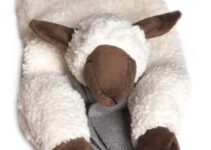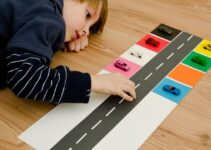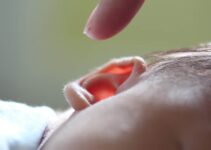The way that children perceive the world is determined by what they see, hear, feel, smell, taste, and perceive with their bodies. This is sensory processing.
There are many sensory activities that children can engage in to develop sensory processing. As a result of the increased attention to sensory development, there are also a growing number of sensory toys.
This article will give you the rationale behind providing sensory toys for your children, as well as a list of some of the many sensory toys available. Believe it out not, you may already have some of them in your home.
We will also give you a few ideas for homemade sensory toys to appeal to your creative side.
Table of Contents
How Sensory Toys Aid in Development
As young children grow, their senses sharpen to help them experience their world. The signals sent from these senses through the nervous system to the brain integrate, helping children to interpret what their senses are experiencing and allowing them to develop responses to those experiences.
These responses allow children to interact with the world and learn from it. Sensory play, and in particular play that incorporates touch with the other senses, helps to stimulate cognitive development in the brain (Butcher & Plecher, 2018).
Research supports the importance of sensory play in the overall cognitive, emotional and social development of young children.
One recent study showed that play activities offering moderate to high levels of tactile and vestibular sensory input were positively related to levels of positive affect in children with sensory differences and mobility impairments (DeBoth, et. al. 2019).
Another study focusing on a pilot intervention model found that sensory play activities helped to improve self-regulation and attachment in foster children (Sanders, et.al., 2016). Sensory play also helps to stimulate creativity in young children (Howard-Jones, et.al, 2010).
Sensory toys add a critical level of sensory input and interest to sensory play. Some sensory toys target a specific area of sensory input to facilitate the development of that sense, while other sensory toys offer multiple methods of sensory input to help the senses integrate.
Children who are developing normally instinctively select sensory toys that target those senses currently developing in a child’s neurological system. For example, a child who repeatedly selects sand toys or play foam during play time may be seeking tactile input for a developing sense of touch.
A child who rides a toy tricycle around and around the living room may have a developing vestibular system and may be seeking vestibular input. These spurts in sensory play change and end as children’s sensory systems mature.
Children who have sensory differences or Sensory Processing Disorder (SPD) may require some assistance when selecting and playing with sensory toys.
Children with sensory processing differences may avoid certain types of toys due to sensory sensitivities or may overly focus on one type of sensory toy while ignoring others. Parents, teachers, and other adults may need to guide children with sensory differences as they play with sensory toys.
The following lists of sensory toys are meant as a guide. Do not feel that you have to purchase or make every toy on the list to provide your child with the sensory variety that they need during play.
Remember that your child’s preferences will give you an indication of their sensory needs, so you may want to follow their lead. That being said, it can’t hurt to have a sensory toy or two from each sensory area available as your child grows.
Briefly, here is a review of the body’s senses:
- Vision – perceiving the world through sight.
- Hearing – perceiving sound, also called auditory.
- Touch – also called tactile, this sense uses the nerve endings under the skin to send signals to the brain.
- Smell – called olefactory, sense of smell and taste are closely tied together.
- Taste – perceiving the different characteristics of food, liquid and anything else that goes in the mouth.
- Vestibular – controlled by the inner ear, this sense lets the body know whether it is moving or still and where it is in relation to its surroundings.
- Proprioception – this sense comes from the nerve endings in the body’s joints and tells a person where the arms, legs, and other body parts are in relation to each other.
- Interoception – a recent addition to the sensory list, interoception helps the body to know how it is feeling inside. Hunger, thirst, pain, fatigue, and the feeling of sickness are all communicated to the brain through interoception.
Everyday Sensory Toys
Everyday sensory toys are toys that you may already have in your home. If not, these toys are common and easy to obtain. You will be able to find most of these toys at your local discount department store if you don’t already have them. Because these toys are common and well known, we have not included descriptions.
1. Swing Sets/Outdoor Play Sets

Target senses
Vestibular, proprioception
Sensory Development
Outdoor play sets offer a variety of activities that help develop children’s ability to sense and tolerate movement through the vestibular system.
They also help children to develop their ability to sense their own movement and strength as their body functions. This is called proprioception.
Developing these systems will help children to improve their balance, physical strength, and ability to tolerate different types of movement.
Want to Buy One?
This Big Backyard KidKraft Andorra Cedar Wood Swing Set is a great example. There are many different types and varieties of outdoor playsets, so shop around.
2. Scooters and Scooter Boards
Target senses
Vestibular
Sensory Development
Scooters provide children with linear movement similar to a moving vehicle. They help children to develop their vestibular systems, aiding in their ability to sense and tolerate movement.
Want to Buy One?
Try the Champion Sports Standard Scooter Board.
This kind can be used indoors on a non-carpeted floor. Do not let your child stand on this type of scooter board. They should sit, kneel, or lay on it and push with hands and feet.
3. Trampoline
Target senses
Proprioception, vestibular
Sensory Development
Trampolines help children to feel the difference between grounding the body (when feet contact the surface) vs. linear movement (bouncing into the air).
Children also learn about their position in space in relation to their surroundings. Note: make sure to observe any safety precautions and warnings when providing a trampoline for your children.
Want to Buy One?
Check out our list of the best trampolines for kids. For safety reasons, I do recommend you stick to the top trampoline brands.
Or try the Little Tikes 3 Trampoline.
Make sure you always supervise your children when they are jumping on a trampoline!
4. Tactile Substance Toys
Some of these substances started out as specialized sensory toys, but they are now more widely available. They include:
Target senses
Touch, smell, vision
Sensory Development
Tactile substance toys stimulate the small nerve endings under the skin of children’s fingertips. This stimulation helps children to develop their sense of touch.
The act of manipulating substances also helps fine motor development. The colors and scents added to tactile substance toys helps to integrate the senses of vision and smell into the play experience.
Want to Buy Some?
Click on the links above to check them out.
5. Stress Balls
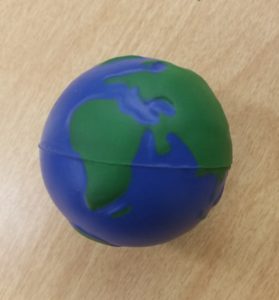
This is the one I have
Target senses
Touch, proprioception
Sensory Development
Stress balls give children a manageable resistance while squeezing, allowing them to feel the texture of the ball and the resistance of the foam. This helps a child to be aware of the position and strength of the fingers as they hold the object.
Want to Buy Some?
You can literally find these anywhere, but here’s a set I like to take some stress out of your shopping.
6. Flashy Balls

This is the one I have
Target senses
Vision, touch
Sensory Development
Flashy balls help to develop visual perception, as well as visual tracking and reaction time. The textured surfaces of flashy balls stimulate the nerve endings of the fingers, helping to develop sense of touch.
Want to Buy One?
Buy a set and save a few back for when the lights go out.
7. Spinning Tops
Target senses
Vision
Sensory Development
Tops help to develop visual processing and visual attention.
Want to Buy One?
Kids always like the light-up variety. Try the Liberty Imports LED Light Up Mini Spinning Tops
8. Rain Sticks
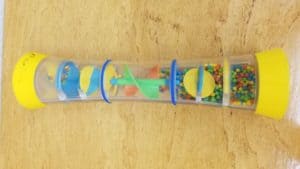
This is the one I own
Target senses
Hearing, vision
Sensory Development
Rain sticks provide regular, rhythmic auditory input to help develop the sense of hearing. The colored beads and moving parts inside toy rain sticks also help to stimulate visual processing. Children with sensory processing problems often find rain sticks calming.
Want to Buy One?
These toys come in many sizes and colors.
Try the Halilit Baby Rainmaker
9. Bubbles
Target senses:
Touch, vision, oral proprioception
Sensory Development:
Blowing bubbles helps children to become aware of the sensation of blowing and controlling air flow. Bubbles also provide visual input and touch input if children pop them with their fingers.
Want to Buy Some?
This no-spill variety works great!
Click here to see today's price for the Fubbles No-Spill Tumbler on Amazon
Therapeutic Sensory Toys
Therapeutic sensory toys are more specialized than everyday sensory toys. These toys are developed to provide specific types of sensory input for children who have sensory processing problems. Children often use these toys in school or pediatric hospital settings.
You can obtain these toys yourself through online stores, but you may want recommendations from an occupational therapist to make sure that these toys are what your children need. A description of each toy is included in this section.
10. Sensory Swings

Various swings made of firm platforms, stretchy bags and nets, and other materials. These swings are often made for indoor use and require suspension systems.
Target senses
Vestibular, proprioception, touch
Sensory Development
Sensory swings provide children with movement in a controlled manner. The amount of movement can be adjusted based on what each child can tolerate. The different designs of sensory swings also help to provide proprioceptive and tactile input.
Want to Buy One?
This swing is durable, as it holds up to 200 lbs. Spend the extra money on the swing swivel to avoid damage to the suspension hardware.
Click here to see today's price for the Harkla Indoor Therapy Swing on Amazon
11. Balance Board

A rocking board made of plastic or wood, with a non-skid standing surface. The child stands on the board and attempts to keep their balance.
Target senses
Vestibular, proprioception
Sensory Development
Balance boards help children to develop their sense of balance and position in space.
Want to Buy One?
This balance board might not look flashy, but it is durable, has a good non-skid standing surface, and the price is right.
Click here to see today's price for the StrongTek Professional Wooden Balance Board on Amazon
12. Putty
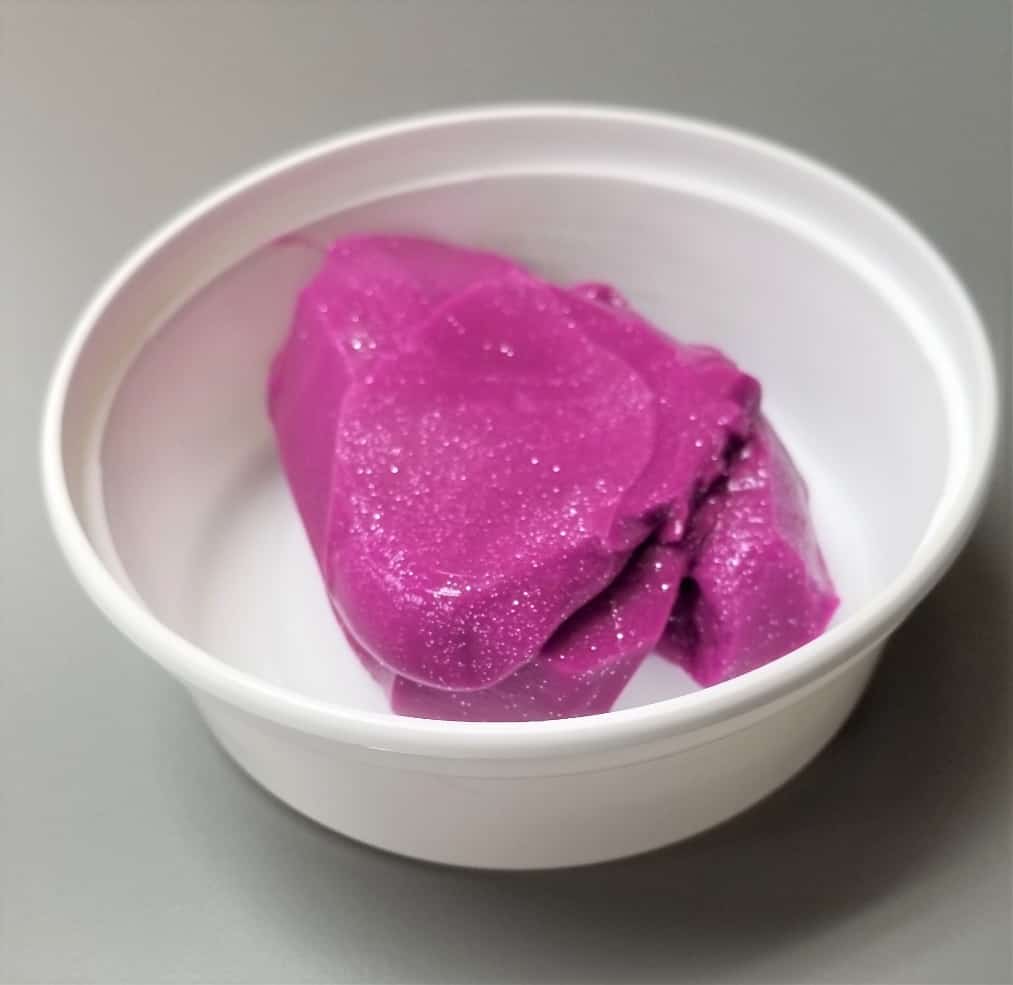
Photo by the author
A squishy, stretchy, resistive substance that can be squeezed, pulled and rolled.
Target senses
Touch, proprioception
Sensory Development
Putty has been used by therapists for years to help strengthen hands. Children now use it to help develop the nerve endings in their fingers and to help them discriminate where their fingers are in relation to each other.
Want to Buy Some?
This putty is made especially for kids and includes fun objects to hide and find.
Click here to see today's price for the Fun and Function’s Discovery Putty on Amazon
13. Body Socks
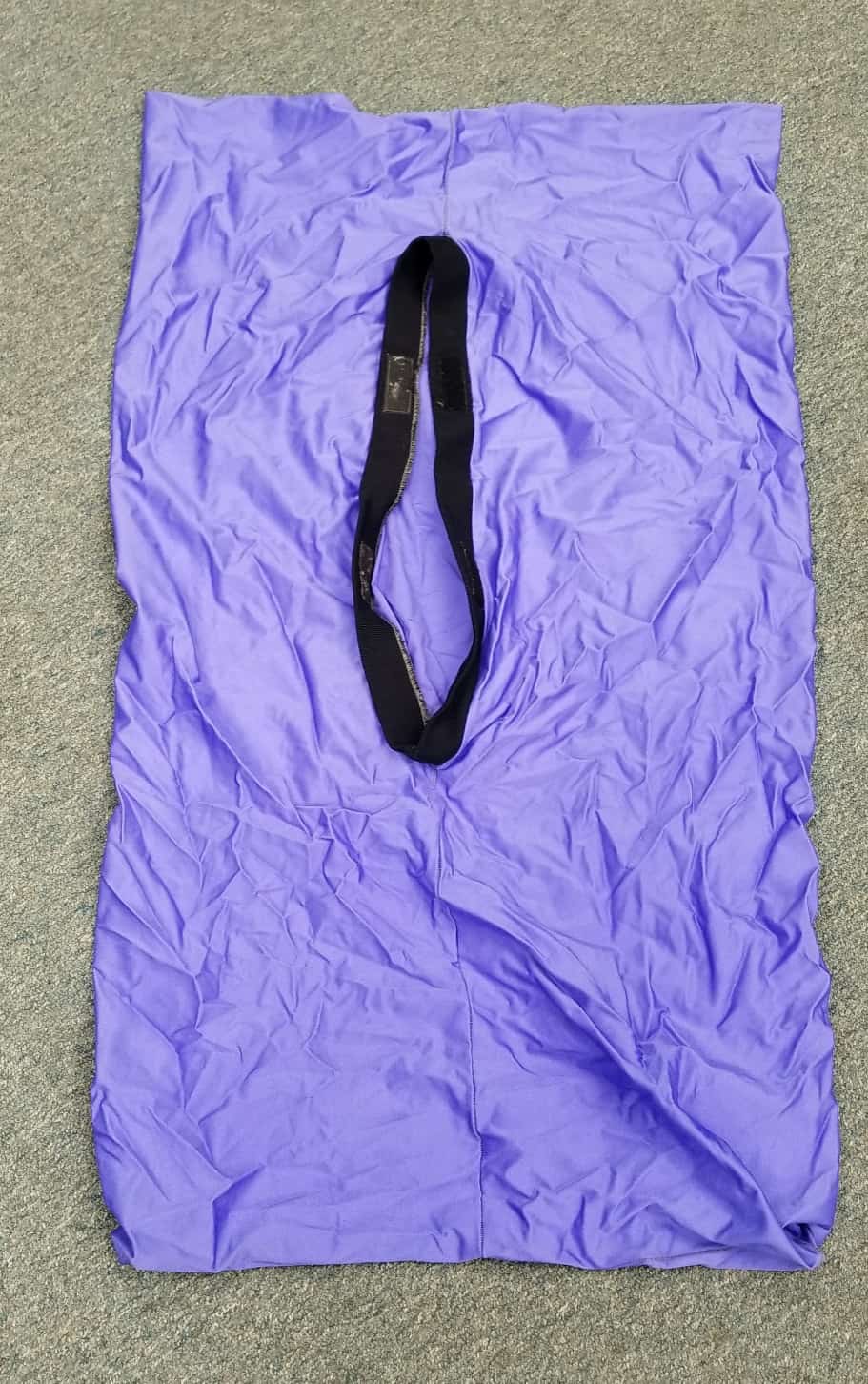
Photo by the author
A spandex “envelope” with an opening to allow a child to climb inside. The child pushes against the stretchy fabric with their hands, feet, and body.
Target senses
Proprioception, touch
Sensory Development
Body socks help children to develop the nerve endings in their joints that provide proprioceptive input. The pressure of the stretchy fabric against the skin also helps overly sensitive children to calm their sense of touch. Some children use body socks to shut out other environmental stimuli, which can also be calming.
Want to Buy One?
Make sure to purchase the correct size for your child.
Click here to see today's price for the SANHO Dynamic Movement Sensory Body Sock on Amazon
14. Pop Tubes

Photo by the author
Plastic tubes that can be pulled out or pushed together, making a popping noise as they are pulled or pushed.
Target senses
Touch, proprioception, hearing
Sensory Development
Pop tubes provide input to the nerve endings in the hands and arms that send proprioceptive signals to the brain. The accordion like textures also help to develop the sense of touch and the popping noises stimulate the sense of hearing.
Want to Buy Some?
Click here to see today's price for the Fidget Pop Tube Toys on Amazon
15. Weighted Stuffed Animals

Photo by the author
Stuffed animals that contain weighted materials. These stuffed animals are soft but feel heavier than regular stuffed animals.
Target senses
Touch, proprioception
Sensory Development
Weighted stuffed animals help to stimulate the proprioceptive nerve endings while calming the touch nerve endings. The result is a calming effect that is helpful to children with excess movement needs or sensitivity to touch.
Want to Buy One?
This cute little guy is reasonably priced and makes a great companion.
Click here to see today's price for the Abilitation’s Teacher’s Pet Weighted Lap Dog on Amazon
16. Crash Mat

A large, inflatable pillow or large, thick foam mat. Crash mats come in various sizes and are often used in therapy clinics and school sensory rooms.
Target senses
Proprioception, vestibular
Sensory Development
Crash mats help children with excess movement needs to gain the vestibular and proprioceptive input that their bodies are craving. Play involving a crash mat can help settle a child who cannot manage movement needs.
Want to Buy One?
This mat comes highly rated.
Click here to see today's price for the Milliard Sensory Pad on Amazon
17. Fidget Toys
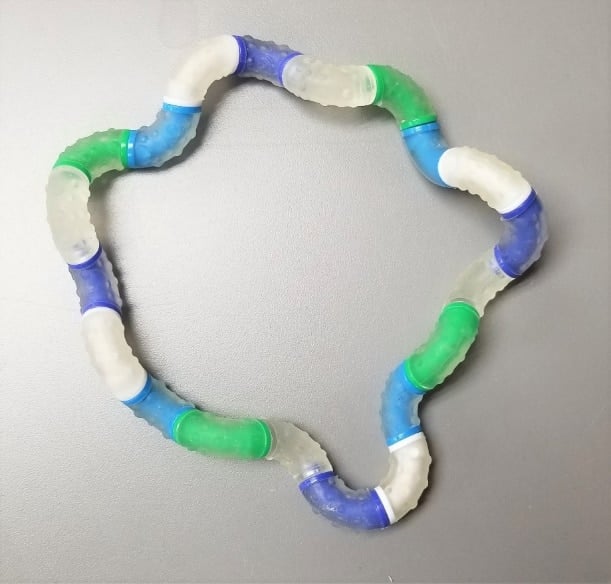
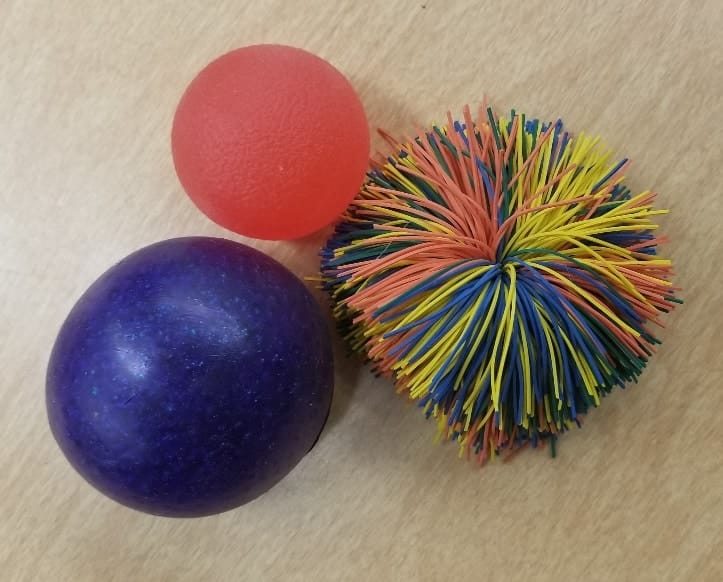
Photos by the author
Fidget toys are small toys that can be held in the hands and played with in a fidgeting manner. They come in many shapes, sizes and styles involving moving parts and squishy textures. Here are a few examples of fidget toys:
- Fidget Balls – vinyl balls that are filled with various substances, including small balls, beads, liquid, and other textures. These balls come in various sizes and colors and have many different visual and tactile effects.
- Inside Out Ball – a ball that is smooth on the outside and has “tentacles” on the inside. A hole in the ball allows it to be turned inside out, bringing the tentacles to the outside.
- Koosh Ball – a ball made of many small strands of colored stretchy material.
- Tangle – a plastic ring made of small, noodle shaped segments that articulate, allowing it to be moved in different directions.
Target senses
Touch, vision, proprioception
Sensory Development
Fidget toys help children to develop their senses of touch and proprioception in their hands and fingers. These toys give children an outlet when they need to move but are required to sit quietly.
The colors and moving parts of fidget toys help to develop visual processing.
Want to Buy Some?
Fidget toys tend to break or get lost easily, so buy a set. It will last you longer.
Click here to see today's price for the Sensory Fidget Toys Bundle on Amazon
18. Wikki Stix

Photo by the author
Lengths of string that are waxed to stiffen them so that they can be bent into shapes. Wikki Stix come in many bright colors.
Target senses
Touch, vision
Sensory Development
The waxy texture of Wikki Stix alerts the nerve endings in children’s fingers and helps develop sense of touch. Children learn the shapes and letters that they make with Wikki Stix through sense of touch. The bright colors help to develop visual sense.
Want to Buy Some?
This set includes a carrying case, which I would recommend.
Click here to see today's price for the Wikki Stix Traveler Playset on Amazon
19. Glitter Wands
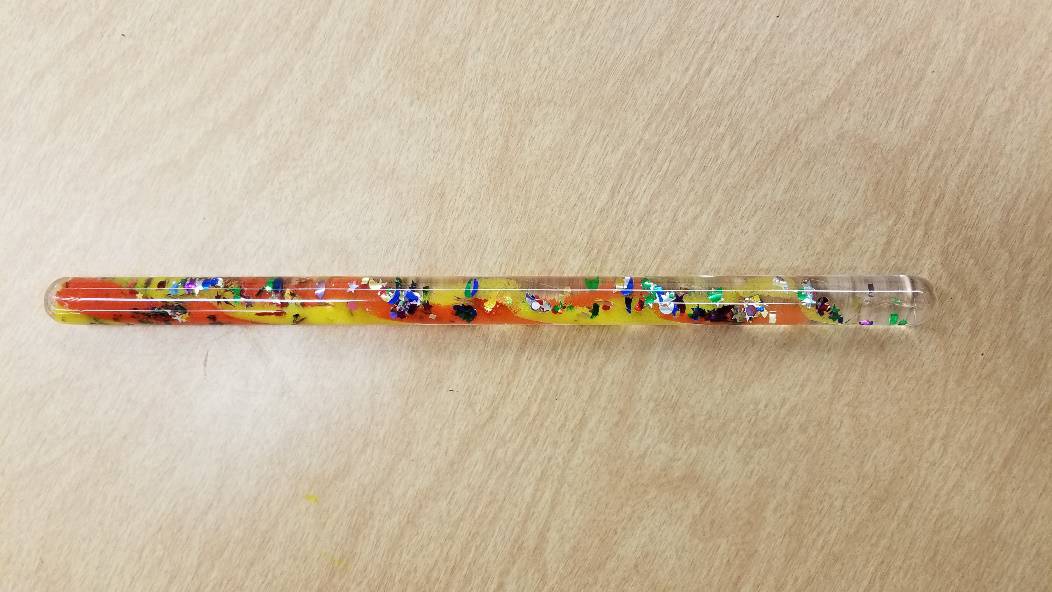
Photo by the author
A long, plastic wand that is filled with liquid, glitter, and confetti or small, plastic shapes. The wand is sealed so the liquid cannot leak.
Target sense
Vision
Sensory Development
When a glitter wand is turned end over end, the glittery substances inside move slowly, satisfying a child’s craving to seek visual stimuli and helping to develop visual tracking and reaction time.
Want to Buy One?
These wands come in different colors. You can also buy them in sets.
Click here to see today's price for the Toysmith Jumbo Spiral Glitter Wand on Amazon
20. Chew Tubes and Chewy Necklaces
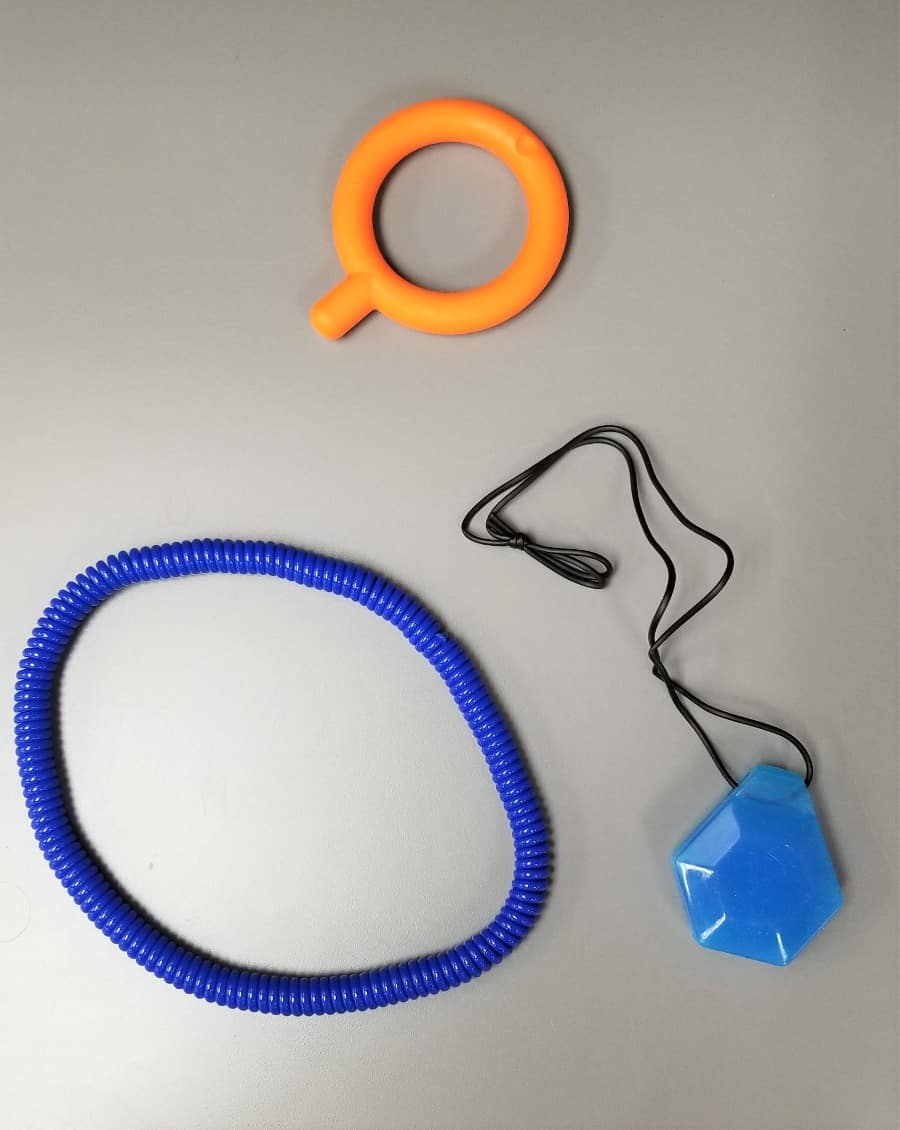
Photo by the author
A necklace made of chewable plastic material, tube or pendant shaped.
Target sense
Oral proprioception
Sensory Development
Chewy items like tubes and necklaces give children proprioceptive input to their mouths and jaws. These items give children who crave this input alternatives to chewing on their clothing, hair, pencils, or other inappropriate items.
Want to Buy One?
There is a lot of variety when it comes to chew toys. Kids tend to like these necklaces, but let your child pick one that they will want to wear.
Click here to see today's price for the Mommy’s Touch 3-Pack Shark Tooth Silicone Chew on Amazon
21. Tactile Disks or Squares

Photo by the author
Flat disks or squares made from textured materials. These toys can be made from plastic, vinyl, cloth, or other materials.
Target sense
Touch, vision
Sensory Development
Tactile disks help to develop the nerve endings under the skin of the fingers, aiding in touch discrimination. These items can be made from many different materials and in many different colors and patterns, which also aids in the development of visual perception.
Want to Buy Some?
Click here to see today's price for the TickiT Silishapes Sensory Circles on AmazonSensory Toys You Can Make at Home
Feeling creative or on a budget? Here are a few sensory toys that you can make for your child at home.
Homemade Stress Ball: Fill a balloon with sand, rice, beans, or beads. Tie the balloon off. Your child will enjoy squeezing this homemade stress ball to feel the textures inside.
Homemade Play Dough: Moms have made play dough for their kids for years. The great thing about homemade play dough is that you can add your own colors and scents, making them as sensory stimulating as you want to. Here is a link to a good homemade play dough recipe.
Homemade Slime: Making slime has become a favorite craft project at schools and daycares now that the gooey substance can be made without Borax. Here is a recipe for slime from the same website as the play dough recipe.
Weighted Stuffed Animal: If you have even basic sewing skills, you can turn one of your child’s stuffed animals from his toy box into a weighted stuffed animal. Use a seam ripper to open up one of the toys seams and remove some of the poly fill.
Replace this fill with heavier poly pellets, dried beans, or bean bags, until the toy is the desired weight. Sew the seam closed and your child will have a weighted stuffed animal to snuggle with.
Sensory Bottle: This is an easy sensory toy to make. You can even add small beads or plastic shapes to add interest. Make sure you glue the lid on each bottle once you have filled it to prevent leaks. Here is the link to the instructions.
If you would like more information about sensory toys and where to buy them or how to make them, type the following search words in your web browser:
- Sensory toys
- Sensory toys for special needs
- Homemade sensory toys
- DIY sensory toys
There are literally dozens of resources and online stores that provide sensory toys, so you should have no difficulty finding that perfect sensory toy for your child.
References
- Butcher, K. & Pletcher, J. (2018, October 2). Cognitive development and sensory play. Retrieved March 3, 2020.
- DeBoth, K., Brown, P., & Barnard, E. (2019, August 1). Behavioral Responses to Sensory Stimuli During Play at Community-Based Events. Retrieved March 3, 2020.
- Howard-Jones, P., Taylor, J., & Sutton, L. (2010, September 17). The Effect of Play on the Creativity of Young Children During Subsequent Activity. Retrieved March 3, 2020.
- Sanders, H., Sears, A., & Apodaca, J. (2016). Sensory-Focused Play and Attachment: Interdisciplinary Collaboration in Treatment Foster Care. Retrieved March 3, 2020.








